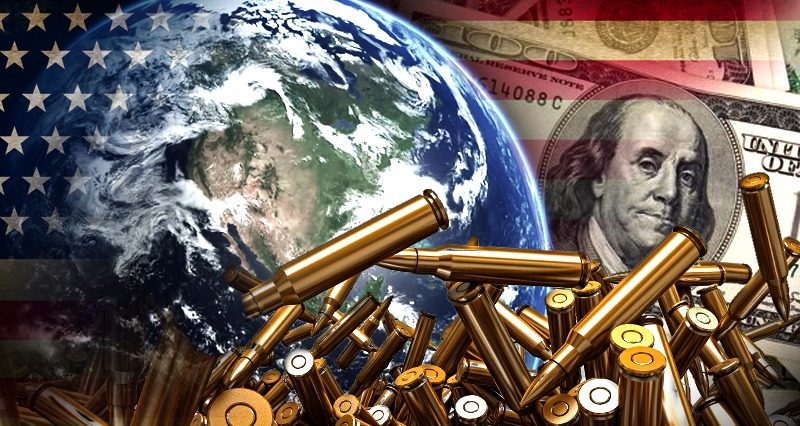The American state, engaged in the regular sale of military weapons, is trying to control both its allies, and, at the same time, draw its competitors into a confrontation they cannot win by provoking them to enter a new arms race.
This is a strategy which the Americans already understand, being as they have successfully employed it in the past. With NATO, they not only created a military alliance: they were able to expand their arms market and acquire an effective tool to influence the economies, politics and even cultures of their allies. This situation simultaneously paved the way for the start of the arms race, as a result of which Soviet leadership, who wanted to secure an advantage over the US in the air, on the land and even in space, was eventually defeated.
Today, the United States has apparently set out to implement something similar. They are seeking to expand the borders of NATO, and simultaneously draw Russia and China into a new arms race. One of the recent steps in this direction was the decision to withdraw from the Treaty on Intermediate-Range and Shorter-Range Missiles (INF). With this one move, Washington brought the territory of European countries, almost all of which are members of NATO, into a state of “potential military action”, and also openly called on Russia to began amassing expensive defensive weaponry. We can assume that immediately following this provocative step, these same European countries will begin to increase their volume of purchases of American weapons, or be forced to take on a portion of the expenditures allocated by the United States for defense within NATO. In this sense, it can be said that the United States achieved its first goal of significantly expanding their arms market. But how about their second goal? Will major global and regional players, most crucially Russia and China, enter into the new arms race?
The answer to this question is related to changing strategies of warfare, and how well these countries understand the current balance of power. Today it has become obvious that wars are fought far beyond the scope of weaponry and the traditional army… modern history shows that not a single state is striving to display the might of its tanks or airplanes against those of their enemy. Military actions today involves every available resource and strategy — a country’s economy and ideology are equally as important as modern weaponry. For example, China understands how much it will cost to manufacture aircraft carriers to equal the number available to the United States, therefore, Beijing is demonstrating a more rational approach, focusing on the development of a new generation of missiles and striving to achieve advantages in space.
Countries today understand that war means more than the use of force: they must strive to keep their opponents under constant pressure of a different nature, threatening them with mass migration, terrorist attacks, economic crisis, or conflicts with neighboring states. Today, every nation realizes that military might is only one aspect of geopolitical conflict.
One of the basic principles of contemporary warfare could be summarized as the need “to hinder the full functioning of a competitor in any field”. In the language of economics, this principle implies that it is necessary to reduce an enemy’s strategic potential by forcing the costs of unnecessary weapon production on them, and then watch as they lose strength in the medium and long term due to their own “inefficiency”. Preparing the ground for internal conflicts due to artificially inflated tensions in the public sphere and creating comprehensive obstacles to a country’s development are similar strategies.
Meanwhile, we have no reason to think that the provocative steps taken by the United States will actually lead to a new Cold War style arms race. Of course, the US’ attempt to employ this strategy will create additional expenditures for NATO member countries, and will lead to an increase in purchases of American-made weapons. Yet, it is unlikely that Russia and China will be forced into a “symmetrical response” to the United States’s actions, as even developing countries understand that we are living in an “asymmetric age.” Today, each state, following Mao Zedong’s principle that “every generation should have its own war,”, seeks to develop its own geopolitical strategy and create its own space for maneuvering through creative and innovative means.
In other words, we are witnessing the formation of a geopolitical arena of an entirely new sort, wherein asymmetric methods of struggle allow nations to mitigate their enemies advantages. While some states are “rapidly gaining strength”, others are doomed to a sharp rollback. This is one of the reasons for American aggression, which is increasing every day. The US authorities know that the “unipolar world system” is not viable in the long run… their last attempt is to try to forcibly impose their order to prolong their domination for a while longer… However, it is impossible to turn back the tides of history. Relentlessly, wave upon wave, this era is coming to an end: a new multipolar period of harmony and equality between nations is at hand!









Leave a Reply